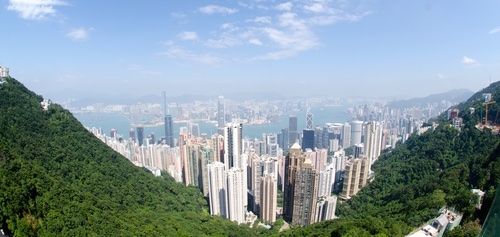
Smart Cities are all the global rage these days. As with any emerging trend, it’s a bit of the Wild West with little consistency or agreement across international communities on definitions, frameworks or metrics to measure effectiveness. But in the broadest sense, Smart Cities leverage connected technologies to increase efficiency and effectiveness for urban communities. The evolution of Smart Cities pose an incredibly interesting challenge and it is one that has the potential for immense impact in local jurisdictions and around the world.
I’m incredibly grateful and honored to be following the Smart City evolution both in the US and in China as part of the 2016 Zhi-Xing Eisenhower Fellowship. My study begins by following industry experts in both countries and, this fall, I will visit China to further understand what both countries can learn from the other.
In the US, the race to transform cities is already underway and the discussion points to several key areas: mobility, housing, citizen services, eco + energy, food systems, safety, emergency response. The underlying technologies supporting these areas span the Internet of Things (IoT), big data, geo-spatial, and with them come concerns such as privacy, data security and robust infrastructure for high speed Internet.
This is not small stuff. Each key area is rife with inefficiencies, bureaucracy and varying technologies. It seems daunting to catalog and streamline who does what and how. But there has never been a greater need or a more ideal opportunity.
There are many industry experts I plan to follow, read, learn and share insights from on Smart Cities, in the hopes of finding a path forward for this next level of innovation.
An essential piece that many industry experts often let fall by the wayside is how policy impacts the reality of moving this innovation forward. The ideal role of government, in this case, is to enable the stakeholder industries to execute novel ideas and to streamline the process to get entrepreneurial approaches to market and integrated across complex systems. Underlying it all is the connected technology platforms on which it all runs.
This year – 2016 – will be the dawn of 5G Internet, which promises to be 50 times faster than the existing 4G. This isn’t building network capability for the future, it’s building it for the current reality. US cities are getting smarter at the same time that consumers are gobbling bandwidth through mobile demand for video and connected apps. It is imperative that local, state and federal governments reduce the barriers to building robust communication infrastructure. This means standardizing rules, removing archaic regulations, and modernizing the steps to deploy these next-generation technologies. We can get this right and the impact can change our nation for the better, making it more connected for all.
We are on the precipice of smart, more connected cities. My goal is to create a shared platform that can inform and prepare thought leaders, government leaders and innovative entrepreneurs for the challenges and opportunities that lie ahead. Smart Cities are the future and fostering a spirit of cooperation will enable us to deliver all it has to offer.


